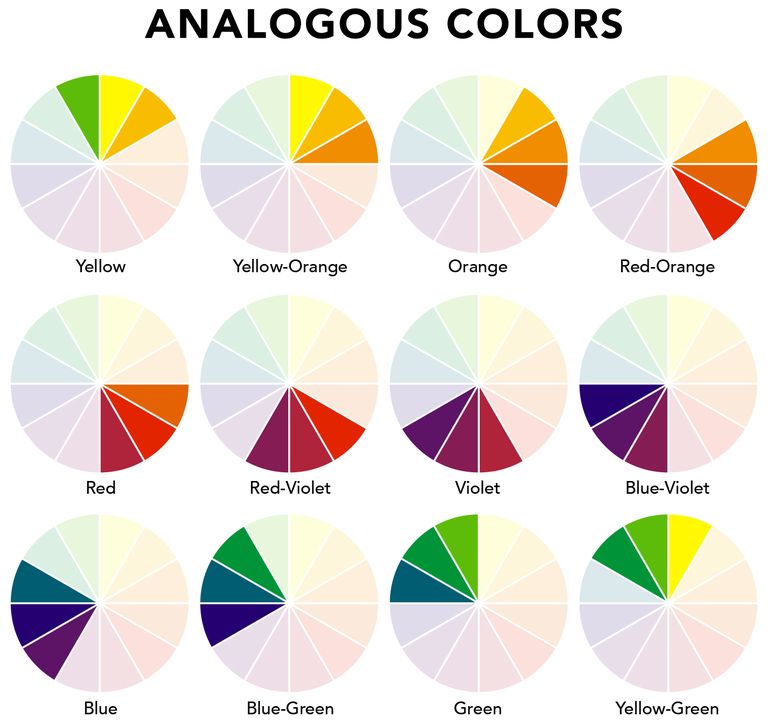

They make for a balanced outfit that incorporates multiple colors. To simplify this rule even further, here are the areas in which you should focus on using each of these colors:ģ0%: Accent chairs, window treatments, bedding, rugs. Triadic colors are three colors equidistant from each other on the wheel. Under this rule, 60% of your space will be the base color, 30% will be your accent color, and 10% will be you pop of color.

Many designers apply the 60-30-10 rule, which is used ensure a peaceful, visually appealing balance. "Also using the analogous colors as the accent colors in an otherwise more neutral palette can be a great way to design a space that is not overwhelming with color." "Selecting shades of the colors that are more muted can be a successful way to pull off a design with analogous colors," Peña says. Look to nature to inspire your palette, and understand that smaller touches of this color scheme, with neutrals as a base, can go a long way. Peña's main caution is that you are careful not to overdo it. Take a look at these color wheels to better understand how the analogous color scheme works:Īnalogous color scheme chart. “Another is the setting sun with hints of red, orange and yellow.” In case you dont remember from elementary-school art class, these three shades. “A succulent is an example of analogous colors in nature, with its blue, green, and blue/green leaves,” says designer Kristen Peña of K Interiors. If youre really ready to mix it up, begin with the primary colors: blue, red, and yellow. Speaking technically, analogous colors are three colors next to each other on the color wheel, composed of one dominant color (usually a primary or secondary color), then a supporting color (a secondary or tertiary color), and a third color that is either a mix of the two first colors, or an accent color that pops. Let’s break it down in more detail below: This scheme involves three hues, all of which are positioned next to each other on the color wheel. While monochrome may be the latest obsession, we’re turning to new pairings for a fresh use of color.
Analogous colors outfits pro#
This is a rule that even pro designers follow, and can be used to guide the design of your interiors. For example: orange – pink – green, purple – blue – mustard.When in doubt, turn to the color wheel. Rule #5: Split-complementary colors consist of two adjacent colors and one complementary. Beyond that, analogous color schemes can also be used when designing products, logos. They can also be put to good use to create an outfit with a cohesive, but varied look. Triadic colors: three colors evenly spaced on the color wheel. Popular examples are turquoise (light blue) – violet (red/purple), teal (blue/green) – pink (red/purple) – mustard (yellow/orange), royal blue (deep blue) – yellow green – orange (red/yellow), teal – purple – orange (first Gucci). Analogous colors: the eye-soothing color scheme we’ll talk about in today’s article. You can pull all three or, more commonly, two of the three in an outfit. This is a great example of an analogous color scheme. If you scroll down to my nature photos below, you can see an example of how the green cucumbers and yellow squash look by each other. Rule #4: Triadic colors are combinations of any three colors that are evenly spaced on the color wheel. Analogous: Analogous colors are a set of three colors that are next to each other on the color wheel and can create a nice scheme. Examples are: purple – yellow, blue – orange, pink – light green (watermelon), etc. A color wheel is a circle diagram that shows the relationship between different colors. Rule #3: Colors that are opposite on the wheel are complementary, which means they also bode well. Fashion designers use the color wheel for clothes matching. The below examples combine the different shades of the same hue. Analogous (similar) colors, which are close to each other on the wheel, go well together. That means that pairing blue and orange in your outfit will. Rule #2: This one is the most intuitive when people think of colors. Ill use the primary color blue again the complementary color (across the color wheel) is orange.

Examples black/pink, blue/white, orange/black and black/white/taupe. Rule #1: You can always combine colors with neutrals/non-colors, i.e.

The explanation is clear if you just take a look at the color wheel: This question pokes into my curiosity and causes me to look into basic color theory for an answer.


 0 kommentar(er)
0 kommentar(er)
